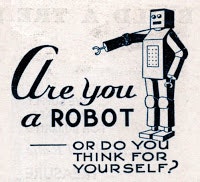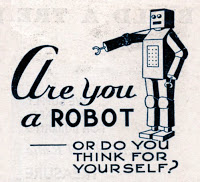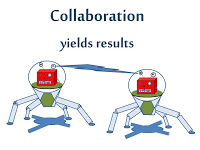Best of Breed Idea Management Software has 10 Key Elements: A Check List For Your Demonstrations.


Thinking about getting an idea management system? Here's your feature/function check list. Of course you should still poll your user community and get their feedback to see what they need. But after you're done, I bet you a nickel you'll end up with a list like this one. Print it out and check off the items during your demonstrations. The Key Elements of Ideation: Living in the Ideagora' Terms: Some quick terms you might want to show off that you know'When you get your idea management software system, your collaborative team will be comprised of Innovation Managers and Ideators. Ideators are the folks submitting ideas. The Ideators and Innovation Managers will dwell in the Ideagora (a classic marketplace for ideas). Ideas need to be promoted to a new status. Typically idea management software vendors call the next steps for ideas 'insights' and then 'concepts'. 1. Social Chemistry: To keep it simple, your idea management tool should be an excellent social environment. Everyone in your organization should be able to use it (and embrace it) like Facebook but internal (and the only things you talk about are the company; how to make it better). You should be able to post links, files, and videos. You should be able to start discussions, comment on anything and express whether you like anything (or vote for it). You should be able to look up someone's profile and contact them. You should be able to have a discussion without connecting it into any particular idea. 2. Knowledge Management: Your idea management system is for ideas and ideas need inspiration. So you have to be able to post inspiration, search for it, archive it and view it. This means word files, spreadsheets, videos, pdfs. And when you pull up the video you should be able to view it. In an ideal world, the new idea management software will replace any existing knowledge management system in the enterprise. Or at least integrate with it. 3. Connective Tissue:  OK, I couldn't think of a better heading for this section but this is what I'm talking about'You need to be able to bookmark any of the objects in the system (files, ideas, challenges). You should be able to 'follow' any of the objects (with the system looking for any changes or updates with whatever frequency you'd like whether it's every 15 minutes or once a month). You should be alerted by tweet or by email or by pop up (or inline box) within the system (e.g. 'you have been requested to give your opinion on this subject; click here'). 4. Social Science: The inherent design of the system needs to allow a true measure of the crowd's opinion. So, yes, votes should be counted. But reputation management (getting a badge for your contributions) can be gamed (by just submitting a bunch of worthless crap). And mere voting systems or reward systems can also be gamed ('thanks for reading this email, please vote for my idea because I really need that iPad because my kid starts college soon'). Your idea management system is amassing a tremendous amount of data about the content in the system. A scientific algorithm determining which idea got the most views, comments, votes, votes on comments, bookmarks, alerts, and follows is the best measure of the wisdom of the crowd. And, by the way, contributor's negative feedback needs to be taken into account. Simply put, negative comments and negative votes are all part of the crowd's opinions. 5. Challenge Me!: Incremental innovation is nifty and the system should take in anyone's unsolicited ideas, but what we really want is everyone talking about what's really important to the company. The things that are being discussed in the executive boardroom should be translated into a challenge for your collaborative team. 'We're going to a big event at the end of the year/How do we drive attendance at our booth'; 'What should the next breakthrough innovation be for our company; what will get our customers spending money with us again after the dips in the economy'? And business turns on a dime so your idea management system should be able to rapidly get a new challenge out there.
OK, I couldn't think of a better heading for this section but this is what I'm talking about'You need to be able to bookmark any of the objects in the system (files, ideas, challenges). You should be able to 'follow' any of the objects (with the system looking for any changes or updates with whatever frequency you'd like whether it's every 15 minutes or once a month). You should be alerted by tweet or by email or by pop up (or inline box) within the system (e.g. 'you have been requested to give your opinion on this subject; click here'). 4. Social Science: The inherent design of the system needs to allow a true measure of the crowd's opinion. So, yes, votes should be counted. But reputation management (getting a badge for your contributions) can be gamed (by just submitting a bunch of worthless crap). And mere voting systems or reward systems can also be gamed ('thanks for reading this email, please vote for my idea because I really need that iPad because my kid starts college soon'). Your idea management system is amassing a tremendous amount of data about the content in the system. A scientific algorithm determining which idea got the most views, comments, votes, votes on comments, bookmarks, alerts, and follows is the best measure of the wisdom of the crowd. And, by the way, contributor's negative feedback needs to be taken into account. Simply put, negative comments and negative votes are all part of the crowd's opinions. 5. Challenge Me!: Incremental innovation is nifty and the system should take in anyone's unsolicited ideas, but what we really want is everyone talking about what's really important to the company. The things that are being discussed in the executive boardroom should be translated into a challenge for your collaborative team. 'We're going to a big event at the end of the year/How do we drive attendance at our booth'; 'What should the next breakthrough innovation be for our company; what will get our customers spending money with us again after the dips in the economy'? And business turns on a dime so your idea management system should be able to rapidly get a new challenge out there.
Thinking about getting an idea management system? Here's your feature/function check list.
6. Innovation Managers: The tools are there but you need good judgment too. So if someone uses the system like Facebook and gets on the system for ten minutes in the morning and ten minutes in the afternoon, you need to grab their attention with the subjects dearest to the company's heart. A 'spotlight' area should exist on the dashboard for today's (or this week's or this month's) most important challenges, ideas or files (HEY, Pay attention to THIS!). You need to juggle the most important Challenges without wearing your audiences patience thin (too many challenges; don't know what to click). And persuasive design should steer the eye to the parts of the dashboard you want people to pay attention. Do you want them to vote on something? Do you want them to submit an idea? 7. Similarity Search: No Idea Gets Promoted Flying Solo! Tag clouds are useful for lots of things. But the most important thing your idea management system's tag cloud can contribute is a similarity search. When you see a challenge, other challenges should be apparent because if someone is interested in one, they'll be interested in the other (maybe even more so). When an idea is posted or if you're looking at for consideration, the similarity search should be pointing out other ideas. An Innovation Manager can decide if the two ideas are almost identical and merge them. If they're close but not quite identical, then the system should let you 'cluster' the ideas. That way they stay separate but get promoted through the process together. By the time your idea gets promoted to a 'concept' (or whatever subsequent level), it will likely be comprised of a bunch of ideas merged together. 8. Tag Cloud: And the tag cloud can do other things for your idea management. It can help people find experts (who knows something about this topic?; I need help!). If a user has an interest in a subject and if the idea management system is the place to find information, they should be able to use the tag cloud to find blogs, files, videos, ideas, challenges, and teams so their research is made easy and swift. This sort of ability can make the idea management system's adoption rate sky rocket. There's a reason why everyone uses Google: because it's easy to find what you need there. Well tag clouds are the secret for idea management users to find information. 9. Development and Consulting Services: Your idea management software company needs more than software. It needs a team led by a visionary. Someone on that team needs an opinion. That leader has to incorporate the latest research in innovation. The visionary's team should include experts in social science, so
cial networking and social media. There should be a group on the team with creative graphic sensibilities. The system will have to operate as good as Facebook and the screens your users see need to be pleasant to look at using persuasive design to lure user's eyes to the right part of the screen. And on the software company's team needs to be IT experts who know how to use industry standards to integrate the idea management software system to other systems. 10. Integration: Your idea management system is an enterprise tool. So it has to live in the real world and that means it has to integrate with other systems. So the team should be open to a having dialog with your PPM vendors or your PLM vendors. They should understand Web Services; should offer API's. The system should be based on an industry standard database (like SQL) and likely written in .net and use XML. Your users should be able to have single sign on. The software should be available as Software as a Service or installed behind your firewall (depending on the IT culture of your organization). And challenges should be able to have inheritable security so you can open up certain challenges to your customers or your partners or to the public. Speaking of integration, can the idea management software system bring in twitter and RSS feeds? Can it connect with a Facebook Fan Page for idea solicitation? Final Jeopardy: Does your idea management software vendor have new modules coming out? Can they integrate with the web to poll the wisdom of the crowd? Can they help you conduct an idea contest? Can they let users connect from Smart Phones? Just good to know you're getting the latest and greatest. Next up? Schedule your demonstrations and make sure your new idea management software at least has all the features and functions listed below. And'''''Good Luck!
Schedule your demonstrations and make sure your new idea management software at least has all the features and functions listed below.
Idea Management Software Feature Function Check List 1. What third party software do we have to connect to? Can they connect to these? 2. Can the best of breed idea system integrate with PPM or PLM systems as well as the modules those vendors offer? 3. Does the vendor use industry standard technologies? XML, .net, SQL. Do they have API's and Web Services? Do they have a history integrating with other systems? 4. Is the system inherently flexible? Can each user have a unique dashboard? 5. Does the system scale? Do they have installations with as many users we have? 6. Do they accommodate 'occasional' users versus 'active users' or is the pricing the same? 7. Do they have manageable security systems? Is the security easy to administer? Is it easy to add users with all the various security levels people might have? 8. Do they have algorithms based on solid social science? 9. Do they have a believable scheme for causing adoption of the system? 10. Do they have consulting partners for when their own team is engaged elsewhere? 11. If your company is international in scope does the software vendor have a history with multiple languages? What is the vendor's perspective on how to handle multiple languages? 12. Do they have standard reports showing the number of views, adoption rates? Can a user easily drill down into the data? Is it easy to see how many ideas (and at what stage) the team has over time periods? What is their position on producing custom reports? 13. Internationalization, portability, testability, usability or other quality attributes 14. Does your idea management software system provide a inherently easy to use interface? 15. Is it browser driven? 16. Can users post, search for, comment on links, files, videos, Word documents, slide decks, spreadsheets, PDFs? When you bring up a video can you view it within the system? 17. Can users start discussions, comment on anything and express whether you like anything (or vote for it)? 18. Can you look up someone's profile and contact them. 19. Can you have a discussion without connecting it into any particular idea? 20. Does the idea management software enable users to bookmark any of the objects in the system (files, ideas, challenges)? 21. Can you 'follow' any of the objects (with the system looking for any changes or updates with whatever frequency you'd like whether it's every 15 minutes or once a month)? 22. Can you be alerted by tweet or email when changes are made in the system? 23. Can other users invite someone to join a discussion or look at a comment or evaluate an idea? 24. Do those invitations also show up on their dashboard? (e.g. 'you have been requested to give your opinion on this subject; click here'). 25. Are ideas scored and ranked by votes? By observing social participation? 26. Can the system accept unsolicited ideas? 27. Can the credit for idea submission be shared? 28. Does the system allow Challenges to be put in front of users? How easy is it to put out a new challenge? 29. Can Innovation Managers manually promote ideas? 30. Can similar ideas be merged? 31. Can similar ideas be clustered? 32. Does the system use persuasive design to encourage specific types of participation? 33. Does the idea management software include Similarity Search and Tag Cloud functionality? 34. Are similar objects suggested by the system with a percentage similarity shown? 35. When someone needs an expert, does the system make suggestions based on users' behavior and demonstrated expertise? 36. Does the system allow tag cloud words to be applied by other users? 37. Does the system automatically post tag cloud words to users based on their behavior? 38. Is it easy to find an expert? 39. Is it easy to search for ideas, people, and files? 40. Does the idea management software company have full time graphic design experts? 41. Do they have social media/network experts on staff full time? 42. Does the company have modules for mobile phones? 43. Does the company have modules for easy idea contest deployments? 44. Does the company have modules to integrate with the web for tapping into the 'wisdom of the crowd'? Ron Shulkin is Vice President of the Americas for CogniStreamer', an innovation management software system. You can learn more about CogniStreamer here http://bit.ly/ac3x60 Ron manages The Idea Management Group on LinkedIn (Join Here) http://bit.ly/dvsYWD . He has written extensively on Idea Management (Read Here) http://bit.ly/b2ZEgU . CogniStreamer' is an idea management software tool. It is an open innovation and collaboration platform where internal colleagues and external partner companies or knowledge centers join forces to create, develop and assess innovative ideas within strategically selected areas. The CogniStreamer' portal is an ideal collaborative platform that invites users to actively build a strong innovation portfolio. In addition it provides a powerful resource for internal and external knowledge sharing. The CogniStreamer' framework is used by industry leaders such as Atlas Copco, Bekaert, Case New Holland, Cytec, Imec, Picanol and ThyssenKrupp. CogniStreamer' represents the best use of adaptive collaborative technology such to harness human skill, ingenuity and intelligence.